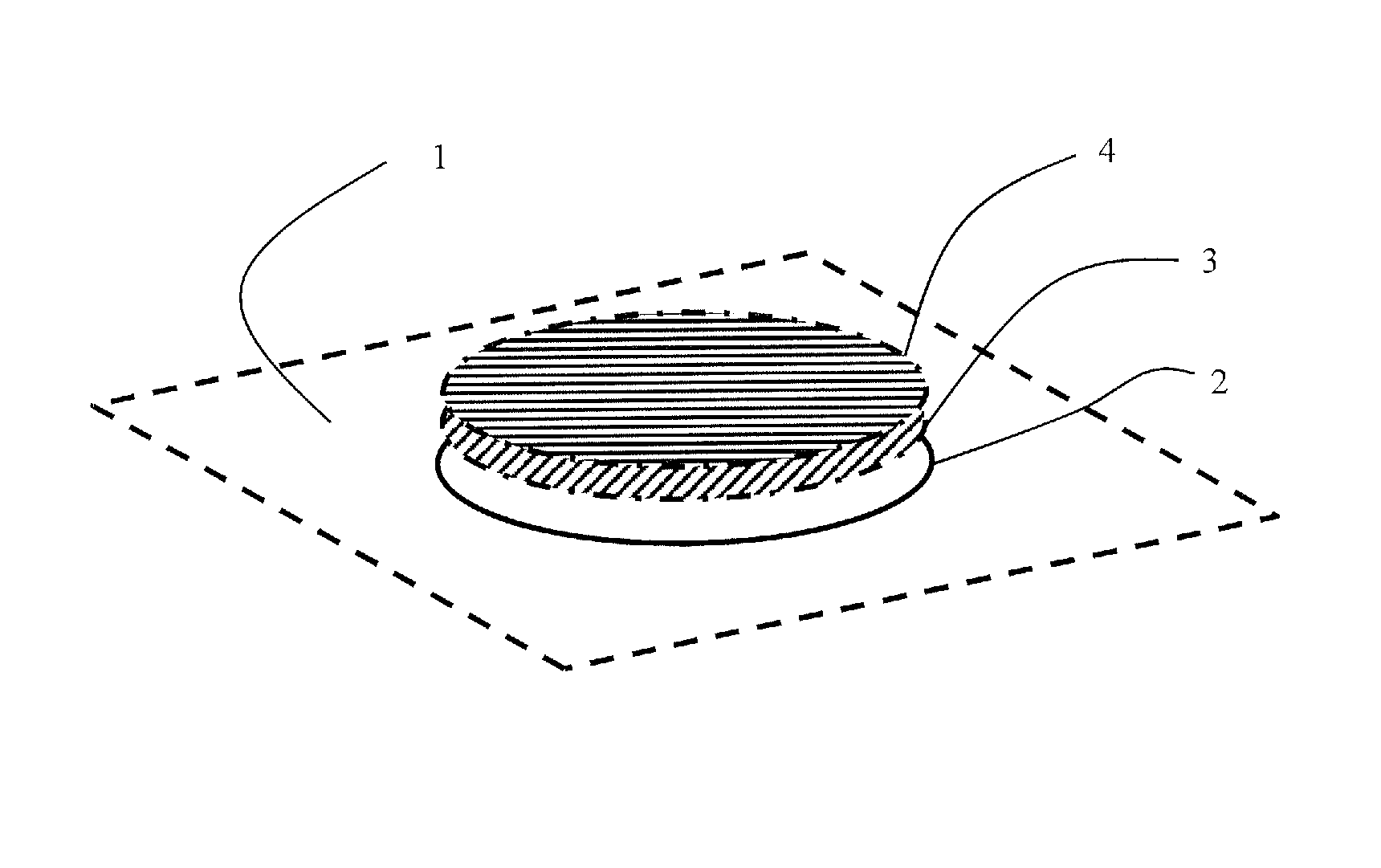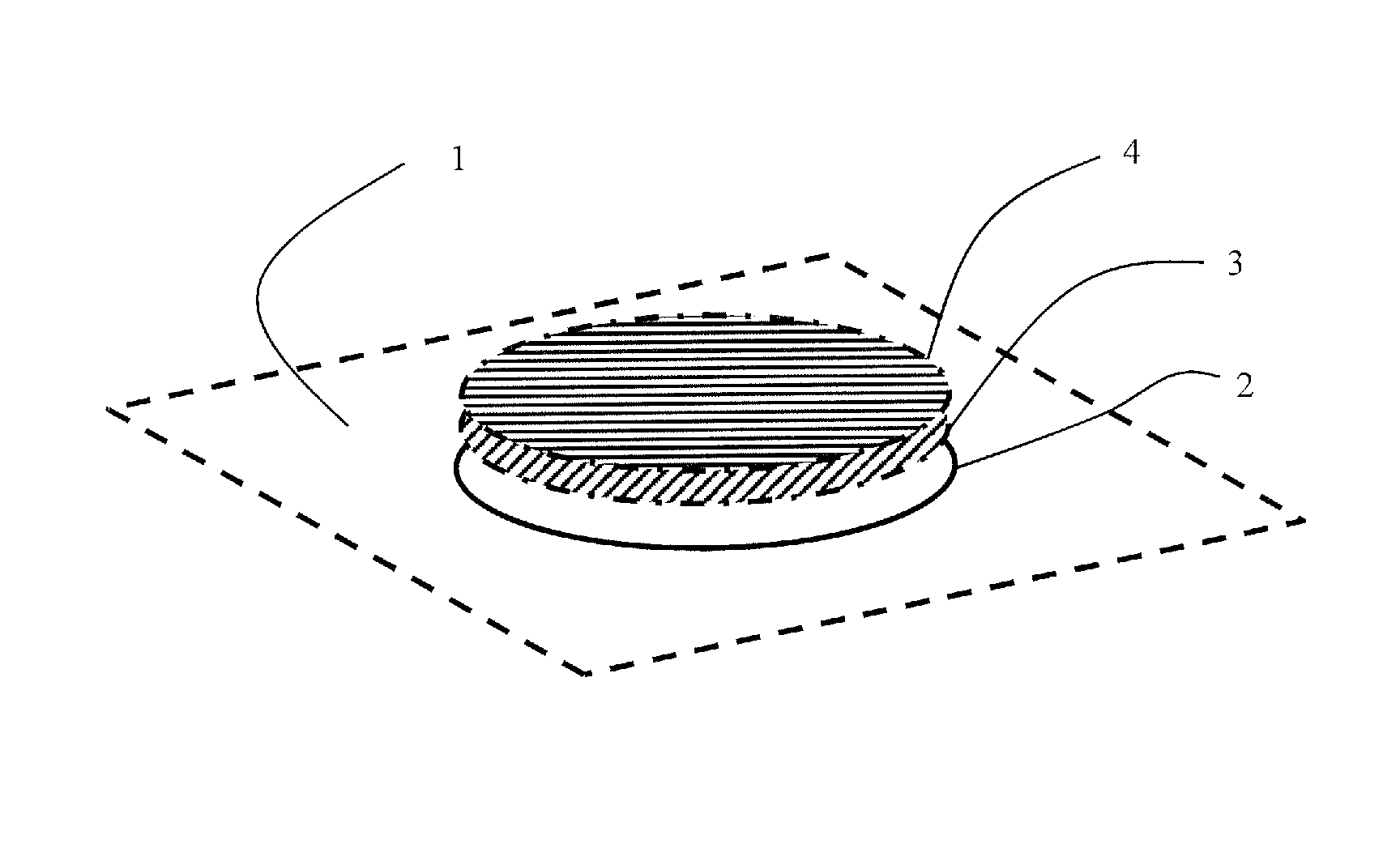Brachytherapy method of treating skin tumors using a tailor-made radioactive source
a skin tumor and brachytherapy technology, applied in radiation therapy, radiation therapy, x-ray/gamma-ray/particle irradiation therapy, etc., can solve the problems of significant increase in the risk of developing subsequent bcc's at other sites, insufficient information provided by traditional diagnostic methods, and especially vulnerable rims of the ear and the lower lip, so as to prevent any possible skin contamination, and control the effect of irradiation
- Summary
- Abstract
- Description
- Claims
- Application Information
AI Technical Summary
Benefits of technology
Problems solved by technology
Method used
Image
Examples
example 1
Composition and Methods for the Fabrication of Radioactive Sources for Radiotherapy of Skin Tumors
[0064]Among the possible modes for obtaining radioactive sources in thin layer, a useful technique consists in evaporating a volatile solution, containing both a coordination complex of the isotope and a dissolved matrix-forming molecule (i.e. a plastic, or a gum, or a polymer). By this technique, however, a uniformity of dispersion of the isotope during the solvent evaporation is hard to obtain, due to the fact that the evaporation of a solvent is not a regular process. Another technique used consists in the use of a polymerizable matrix (epoxy resin, etc.); in this case the semi-solid form of the matrix renders problematic the fabrication of a regular thin layer of uniform thickness.
[0065]The present application proposes as a matrix for the preparation of radioactive source in thin layer for use in medicine, the use, as a binding matrix, of a semi-fluid resin or paint, preferably chos...
example 2
Application of the Radiotherapy of Skin Tumors
[0071]More than 300 patients with histologically confirmed diagnosis of BCC or of SCC were enrolled for a brachytherapy treatment, by using the radioactive sources prepared by one of the above mentioned methods. In many of the patients a relapse of the tumor successive to a surgical excision was present; in others a surgical operation would have been impossible, or functionally and / or aesthetically unacceptable. The application of the product must be preceded by an accurate cleaning and curettage of the lesions. This treatment is useful not only for more precisely delineating the extent of a tumor, but also to eliminate all the keratinic crusts, granulation tissue, scabs, that, due to their thickness, would stop the beta particles irradiation. Both BCC and SCC appear often ulcerated, with presence of serous and blood scabs; in other cases keratin plaques or nodules of horny consistence are present. In all cases an accurate and complete e...
example 3
Medical Results
[0078]Immediately after the treatment, a faint reddening of the treated skin area is visible. After a few days a variable erythema is present, sometimes with emission of serum, and a crust or scab is formed. An apparent worsening of the aspect of the lesion is often observed, with the appearance of a burn, but the bleeding, often present before the therapy, usually disappears. After 40-120 days the erythema fades, sometimes a second scab is formed, and itch is present. The clinical healing is more clearly apparent, the tumor neoangiogenic development, often clearly visible with epiluminescence before the treatment, starts to disappear. After 60-180 days, in most of the cases, an apparent clinical healing is present, rarely with persistence of a scab. The lesion area becomes paler than the untreated skin, the tumor neoangiogenic development disappears, and a fading in the skin coloration appears.
[0079]A Perspex screen 10 mm thick was found sufficient to protect the phy...
PUM
 Login to View More
Login to View More Abstract
Description
Claims
Application Information
 Login to View More
Login to View More - R&D
- Intellectual Property
- Life Sciences
- Materials
- Tech Scout
- Unparalleled Data Quality
- Higher Quality Content
- 60% Fewer Hallucinations
Browse by: Latest US Patents, China's latest patents, Technical Efficacy Thesaurus, Application Domain, Technology Topic, Popular Technical Reports.
© 2025 PatSnap. All rights reserved.Legal|Privacy policy|Modern Slavery Act Transparency Statement|Sitemap|About US| Contact US: help@patsnap.com


